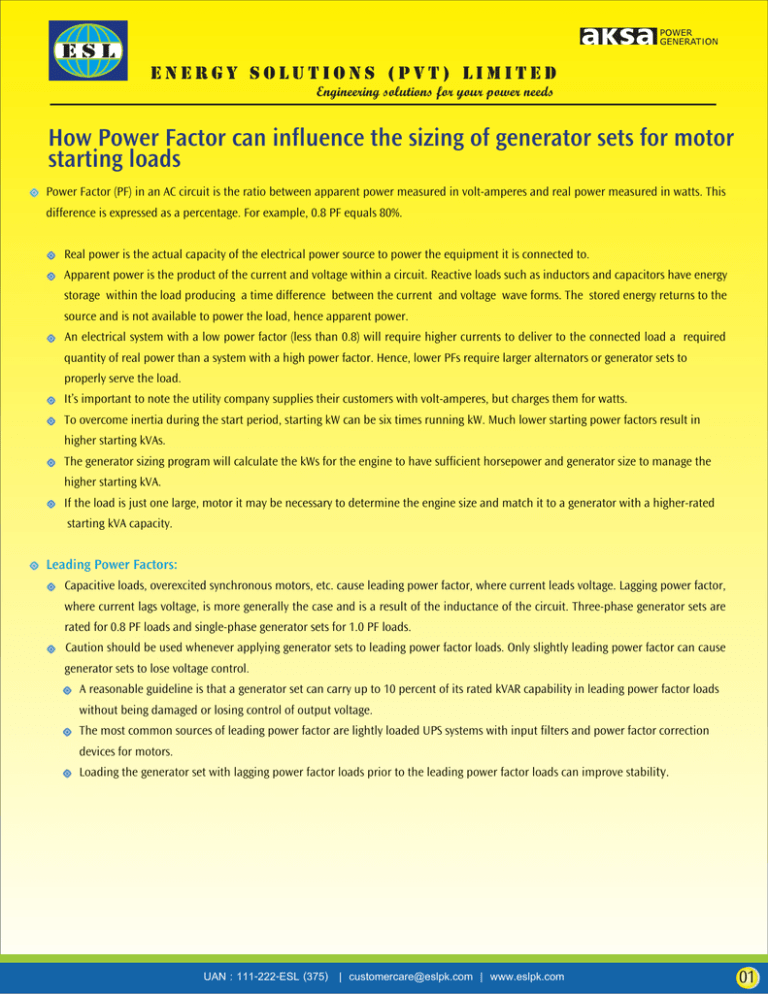How Power Factor can influence the sizing of
advertisement

ENERGY SOLUTIONS (PVT) LIMITED How Power Factor can influence the sizing of generator sets for motor starting loads Power Factor (PF) in an AC circuit is the ratio between apparent power measured in volt-amperes and real power measured in watts. This difference is expressed as a percentage. For example, 0.8 PF equals 80%. Real power is the actual capacity of the electrical power source to power the equipment it is connected to. Apparent power is the product of the current and voltage within a circuit. Reactive loads such as inductors and capacitors have energy storage within the load producing a time difference between the current and voltage wave forms. The stored energy returns to the source and is not available to power the load, hence apparent power. An electrical system with a low power factor (less than 0.8) will require higher currents to deliver to the connected load a required quantity of real power than a system with a high power factor. Hence, lower PFs require larger alternators or generator sets to properly serve the load. It’s important to note the utility company supplies their customers with volt-amperes, but charges them for watts. To overcome inertia during the start period, starting kW can be six times running kW. Much lower starting power factors result in higher starting kVAs. The generator sizing program will calculate the kWs for the engine to have sufficient horsepower and generator size to manage the higher starting kVA. If the load is just one large, motor it may be necessary to determine the engine size and match it to a generator with a higher-rated starting kVA capacity. Leading Power Factors: Capacitive loads, overexcited synchronous motors, etc. cause leading power factor, where current leads voltage. Lagging power factor, where current lags voltage, is more generally the case and is a result of the inductance of the circuit. Three-phase generator sets are rated for 0.8 PF loads and single-phase generator sets for 1.0 PF loads. Caution should be used whenever applying generator sets to leading power factor loads. Only slightly leading power factor can cause generator sets to lose voltage control. A reasonable guideline is that a generator set can carry up to 10 percent of its rated kVAR capability in leading power factor loads without being damaged or losing control of output voltage. The most common sources of leading power factor are lightly loaded UPS systems with input filters and power factor correction devices for motors. Loading the generator set with lagging power factor loads prior to the leading power factor loads can improve stability. UAN : 111-222-ESL (375) | customercare@eslpk.com | www.eslpk.com 01






